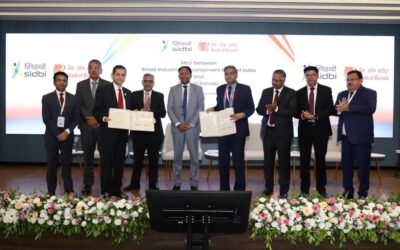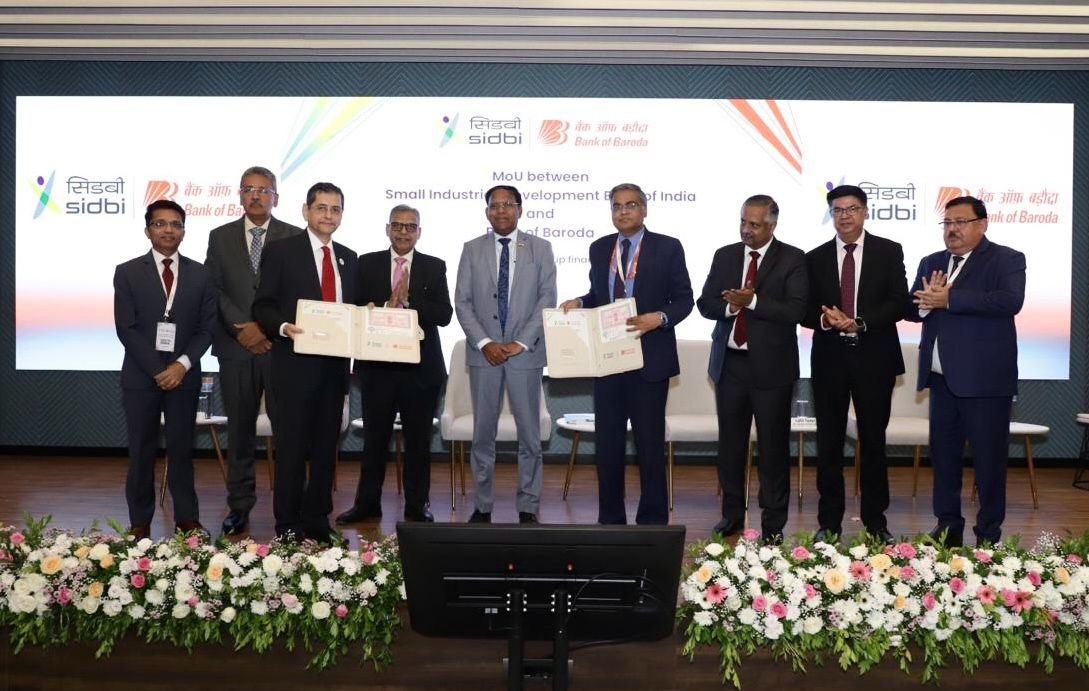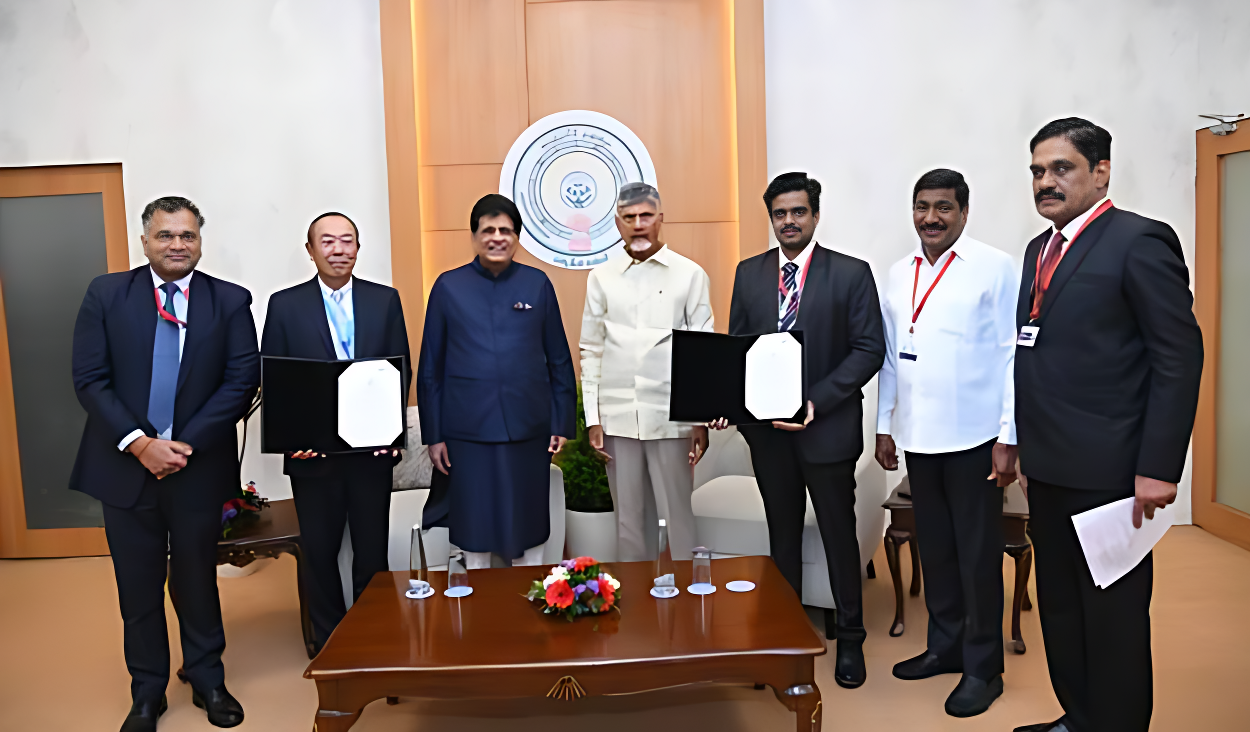Union Minister Piyush Goyal Launches Landmark Initiatives to Revolutionize India’s Logistics Sector

As India marks a decade of its landmark Make in India initiative, the government has unveiled a series of strategic logistics interventions that signal a decisive shift toward a globally competitive, digitally empowered and future-ready supply chain ecosystem. On 25th September 2025, Union Minister of Commerce and Industry Shri Piyush Goyal launched LEADS 2025, the Assessment of Logistics Costs in India and the next-generation Logistics Data Bank (LDB 2.0), cementing logistics as the backbone of India’s manufacturing and export ambitions.
LEADS 2025: Benchmarking State Logistics Performance
The Logistics Ease Across Different States (LEADS) 2025 survey represents a significant step forward in measuring and enhancing logistics efficiency across India’s States and Union Territories. LEADS provides critical insights into the performance of states on multiple parameters, such as journey times, truck speeds, waiting periods and overall infrastructure quality.
Two major innovations in the 2025 edition stand out: first, the performance assessment of key transport corridors using real-time data on journey time and vehicle speeds; second, the integration of API-enabled evaluation of section-wise speeds on major road corridors, allowing for granular tracking and intervention. Such measures are vital not only for policymakers but also for manufacturers and exporters who rely on seamless logistics to maintain competitiveness in global markets.
Shri Goyal emphasized that efficient logistics is the backbone of manufacturing competitiveness. Lower logistics costs directly translate into cost-efficient production, faster market access and stronger global supply chain integration. In sectors like pharmaceuticals, engineering goods and electronics, these improvements are expected to strengthen India’s position as a preferred global manufacturing hub under the Make in India and Atmanirbhar Bharat frameworks.
Logistics Cost Assessment: Bringing Evidence to Policy
For the first time, India now has a scientifically derived, comprehensive estimate of logistics costs, following the launch of the Assessment of Logistics Cost in India. Conducted by NCAER for the Department for Promotion of Industry and Internal Trade (DPIIT), this study puts India’s logistics costs at approximately 7.97% of GDP, significantly lower than the commonly cited 13–14% derived from partial datasets or external studies.
The report employs a hybrid methodology, combining secondary data with nationwide surveys, and captures logistics costs across multiple transport modes, product categories and firm sizes. By mapping each Harmonized System of Nomenclature (HSN) code to the respective line ministry, the government has strengthened inter-ministerial coordination and streamlined policy intervention.
Importantly, the report highlights the gradual slowdown in logistics cost growth relative to non-services output, a trend attributed to large-scale infrastructure initiatives such as PM GatiShakti National Master Plan, Dedicated Freight Corridors, Bharatmala Pariyojana, Sagarmala Project, Integrated Check Posts and the Unified Logistics Interface Platform (ULIP). These programs, coupled with reforms such as GST implementation and rationalization, are systematically reducing inefficiencies, enhancing ease of doing business and supporting India’s global competitiveness.
LDB 2.0: The Digital Backbone of Export Competitiveness
A cornerstone of India’s logistics modernization is the upgraded Logistics Data Bank (LDB) 2.0, developed by NICDC Logistics Data Services (NLDSL). This enhanced platform offers real-time container tracking on high seas, multi-modal shipment visibility across road, rail and sea and a live container heatmap reflecting distribution patterns nationwide.
For exporters, especially MSMEs, this digital infrastructure represents a game-changer. High-seas tracking improves coordination with overseas buyers, strengthens credibility in global markets and allows stakeholders to proactively address bottlenecks. The integration with ULIP APIs enables seamless data flow between different transport modes, ensuring visibility and traceability at every stage of the supply chain.
Shri Goyal highlighted that LDB 2.0 is central to India’s ambition of becoming a globally competitive logistics hub. By empowering exporters with real-time data, facilitating better planning and promoting transparency, the system lays the foundation for an export-friendly, investment-ready ecosystem aligned with the vision of Viksit Bharat by 2047.
Strategic Implications for Industry and Policy
Together, these initiatives illustrate a multi-pronged approach:
- Performance Benchmarking (LEADS 2025): Helps states optimize logistics corridors and improve last-mile connectivity.
- Cost Transparency (Logistics Cost Assessment): Provides evidence-based policy guidance to reduce operational inefficiencies and make logistics globally competitive.
- Digital Oversight (LDB 2.0): Empowers exporters with real-time visibility, reducing delays and enhancing trust with international buyers.
The combined effect is a more resilient, data-driven logistics ecosystem, capable of supporting India’s ambitions under Atmanirbhar Bharat and the Viksit Bharat 2047 vision. By enabling faster goods movement, lowering supply chain costs and integrating multi-modal transport, India is setting the stage for sustainable manufacturing growth and a competitive edge in the global export market.
Looking Ahead
Despite these initiatives, the road ahead requires continuous policy fine-tuning. LEADS 2025 must ensure state-level adoption of recommendations, while LDB 2.0’s full potential hinges on widespread industry integration. Further, the cost assessment should feed into actionable tax, infrastructure and trade policy reforms. Realizing digital interoperability between ports, logistics parks and last-mile delivery networks will be crucial to sustaining India’s competitive gains.
In essence, India is moving from policy rhetoric to operational precision. These launches signal a paradigm shift: logistics is no longer a back-office function; it is a strategic lever for industrial growth, export competitiveness and global supply chain leadership.











